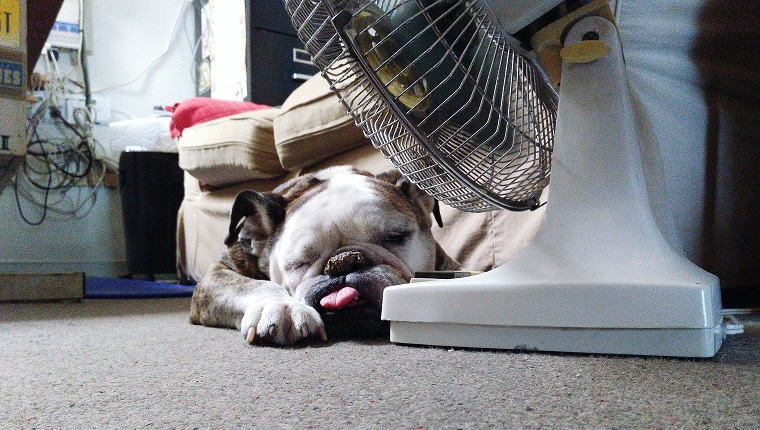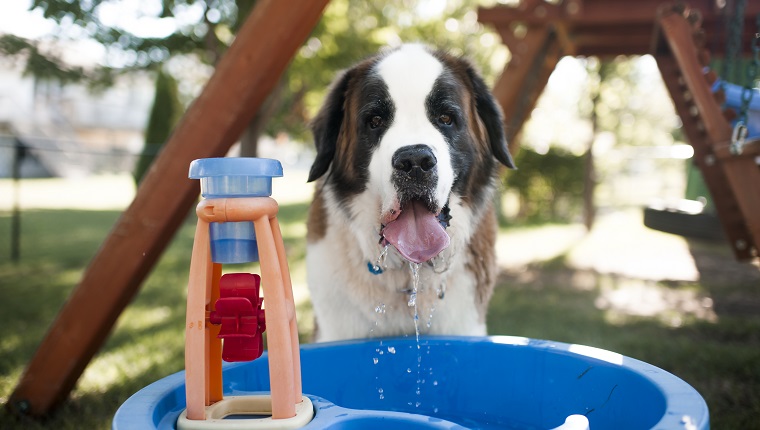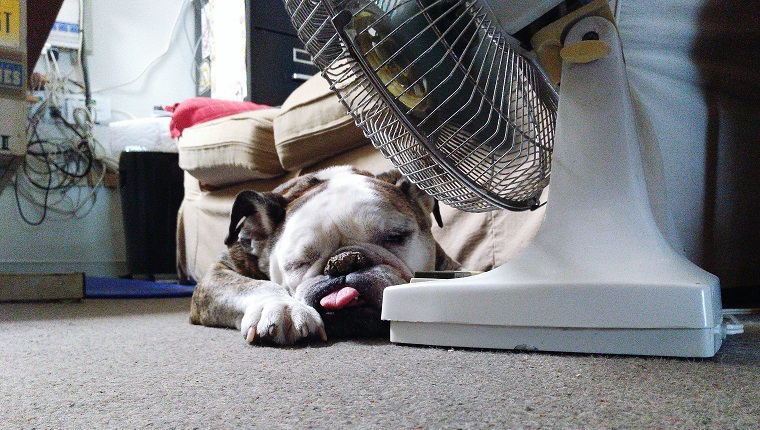
Heat stroke occurs when your pet’s internal temperature becomes dangerously high, generally about 106 degrees Fahrenheit. It can be due to being locked in a hot car or over-exercising in a hot or humid environment.
Either way, it leads to a cascade of very serious conditions that can result in brain damage, organ failure, and death. A chemical reaction occurs and actually breaks down the cells in your pet’s body.
Here’s what you should know about the signs of heat stroke, the treatment, and how to prevent it from happening in your dog.
What Are The Signs Of Heat Stroke In Dogs?

The symptoms of heat stroke in dogs increase in severity the longer a dog goes without treatment and the longer they’re exposed to dangerous conditions.
Here are a few of the signs of heat stroke in dogs:
- Body temperature can reach 104 to 110 degrees Fahrenheit
- Heavy panting
- Rapid pulse or heartbeat
- Bright or dark red gums & tongue
- Excessive thirst
- Excessive drooling
- Lethargy
- Lack of coordination, staggering
- Seizures
- Glazed eyes
- Bloody diarrhea
- Vomiting
- Unconsciousness
What Is The Emergency Treatment?

If you suspect that your pet is suffering from heat stroke, you should first try to lower the body temperature by moving them to a cool area.
Cooling procedures should begin before driving to the vet. You can soak your pet with cool water, but don’t use ice-cold water, as it may worsen things. If available, use a fan, as it will cool your pet down more quickly.
Call your vet or an emergency clinic, and take your pet there as quickly and safely as possible. It’s important to call the clinic ahead of time so that the staff can be prepared by the time you arrive.
If your pet is alert enough, offer small amounts of water or ice cubes. Stop cooling measures when your pet’s temperature reaches 103 degrees, or your pet may actually become too cold.
At the vet, similar measures will be taken. In addition, the vet will give your dog lots of IV fluids.
Can I Prevent Heat Stroke In My Pet?

There are some simple, common-sense steps you can take to prevent heat stroke.
On hot, humid days, keep your pets indoors, except to go potty. If they must be outside, provide plenty of shade and fresh water. Make sure that your pet can’t spill the water source, or use several bowls in different places.
Add ice cubes to the water bowl to keep water cooler longer. Let your pet play in a cool water “bath” or a kiddie pool. Plan ahead and make sure the shade will still be available as the sunlight changes.
Never leave a pet unattended in a parked car, even for “just a minute.” Leaving the windows partially rolled down will not help. Have you ever noticed how hot it can get inside your car on a summer day, even though it’s not that hot outside? That’s because a car acts like a greenhouse, trapping the sun’s heat.
A Stanford University test found that even if it’s only 72 degrees outside, a car’s internal temperature can rocket to 116 degrees within an hour. When it’s 85 degrees, the temperature inside the car increases to 102 degrees in 10 minutes, and 120 degrees in 20 minutes.
Limit outdoor activity to the early morning and late evening when temperatures are somewhat lower. Carry water with you when walking your dog.
Notice any heavy panting, loss of energy, weakness, stumbling, or any of the signs listed above. If your pet seems to suffer from the heat, stop in a shaded area and give some fresh water. If things don’t improve quickly, take your pet to your vet.
The Veterinarian’s Take On Heat Stroke

Heat stroke is no joke. Don’t let it happen to your pet!
Now is a good time to learn how to take your pet’s rectal temperature. Ask your vet or a nurse to show you how to do it safely with a digital thermometer.
If you see a pet locked in a car, please call your local animal authorities immediately. You may feel weird about it, but you may save a life!
You can also check out www.mydogiscool.com. This site is designed to help spread the word about the dangers of hot cars. Resources include downloadable posters and “It’s hot!” flyers that can be used when a dog is left in a hot car. There is an “Is it Too Hot?” weather forecasting tool that allows you to enter your zip code and see if it’s too hot to take your pal along in the car.
Do you have any tips for keeping dogs cool in summer? How do you prevent heat stroke in your dog? Let us know in the comments below!
Dr. Phil Zeltzman is a board-certified veterinary surgeon who’s worked at Valley Central Veterinary Referral Center in Whitehall, PA. He performs surgery on dogs, cats, and “exotic animals,” and is a Diplomate of the American College of Veterinary Surgeons.




